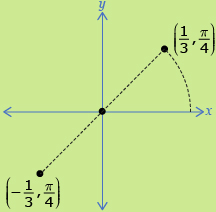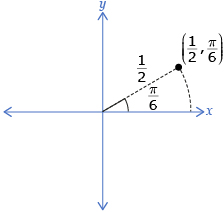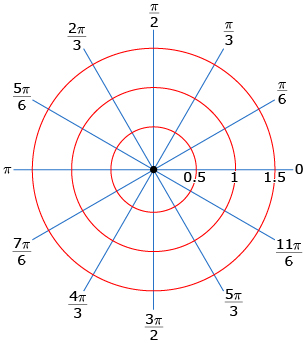Complete the Lesson 6 Assignment that you saved in your course folder at the beginning of the lesson. Show work to support your answers.
![]() Save your work in your course folder.
Save your work in your course folder.
There is no Project Connection in this lesson.
Polar Coordinates
If r is negative, the point reflects across the origin.

Source: Pre-Calculus 12. Whitby, ON: McGraw-Hill Ryerson, 2011.
Reproduced with permission.
Another way of representing trigonometric functions is to use polar coordinates. In this system the coordinates (r, θ) represent a radius and an angle of rotation. In the first diagram, the radius of the terminal arm is ![]() and the angle is
and the angle is ![]() Use the table of values you created in Try This 2 to plot r = sin θ on a polar grid.
Use the table of values you created in Try This 2 to plot r = sin θ on a polar grid.

Use the following polar grid to create your graph of r = sin θ.

Use Polar Functions Explorer to check your graph.